
This article is part of theCh3: Life in a Research Laboratory"Part 2 of the series
Academics and Socialization
- ①Welcome to the New Student Training and Research Laboratory
- ②Classes, ゼミ and Club Presentations ← Current Location
Leisure & Entertainment
Social Culture
Highlights of this article
- Three types of classes at TUT: Japanese classes, English classes, and real experiences in major courses.
- Seminar (ゼミ) operation and paper presentation skills
- Preparation process and practical experience for the presentation of the AIJ (Architectural Institute of Japan)
- From "Isuzu" to "Japanese Paper Publishing"
- Practical Tips and Frequently Asked Questions (FAQ)
- Guided Reading and Reading Suggestions
- Three Classroom Experiences
- Seminars (ゼミ) - Core Activities of the Laboratory
- Conference Presentation
- V. Growing from Zero to One
- Results
- Conclusion
- Frequently Asked Questions (FAQ) for Readers
- Related Resources
- Read Next
Guided Reading and Reading Suggestions
This article chronicles my academic growth during my year at TUT. If you are going to Japan to study for a master's degree or participate in an exchange program, this article will help you:
✅ Learn about the types of classes and learning styles at Japanese universities.(Japanese Classes, English Classes, Major Classes)
✅ Mastering the operation mode of the seminar (ゼミ)(How to prepare a report, how to deal with the supervising professor)
✅ The complete process of learning to publish(from paper writing to presentation)
✅ Overcoming Language Barriers(Practical experience from zero base to Japanese thesis)
It is recommended to read the Quick Checklist first, then complete it step-by-step according to the schedule, and finally refer to the FAQ to solve the frequently asked questions.
Quick Checklist (required before the start of the semester)
- 📋 Preparing for Class Selection
- Confirmation of credit requirements (exchange students are usually required to complete 10-20 credits)
- Understanding how the course selection system operates (T2SCHOLA)
- Take the Japanese Placement Test (if you need to take a Japanese class)
- Discuss course selection with the instructor
- Confirmation of seminar (ゼミ) time (usually 1-2 times per week)
- 📋 Must Do Items in the Semester
- Prepare for self-introduction (1-3 minutes each in Japanese and English)
- Understanding the override mode of operation and reporting frequency
- If you have a presentation plan, discuss it with your supervising professor in advance (at least 3 months in advance).
- Prepare thesis writing tools (Word, Matlab, etc.)
- Creating a note-taking system for reading papers (organizing good sentences, monikers)
- 📋 Preparation for the Academy Presentation (if applicable)
- Confirmation of the Institute's submission deadline (usually 2-3 months in advance)
- Writing abstracts of papers (Japanese or English)
- Production of presentation slides (about 15-20 pages for a 12-minute report)
- At least 3 rehearsals (timed, corrected, rehearsed)
- Prepare Q&A responses (anticipate questions that may be asked)
- Confirmation of attire (formal suits)
Three Classroom Experiences
Although I was an exchange student participating in the ACAP program, I took some professional courses taught in Japanese (e.g., Structural Dynamics of Buildings) and took additional Japanese courses on my own to accelerate the improvement of my Japanese skills, and I also wrote my graduation thesis at the suggestion of my teacher.
📚 Class Type 1: Japanese Language Classes
Why do you recommend Japanese language classes at TIT?
In my personal opinion, the Japanese language program at EIT is highly recommended. The school system is based on Japanese Language Proficiency Test(JLPT), assesses the need for Japanese language proficiency for foreign students, and arranges appropriate and challenging courses.
My Learning Path::
- Pre-academic: Isuzu and basic grammar only (N5 level)
- 3 months after coming to Japan: Pass N2 level exams
- Advancement Program: Enter a more advanced Japanese course to learn diction and intonation.
Course Content and Materials
The Japanese lessons are very practical and covered:
| Course Type | Content | Applicable to |
|---|---|---|
| Basic Japanese | Fifty notes, basic grammar, everyday conversation | N5-N4 Level |
| Intermediate Japanese | Reading Comprehension, Listening Training, Essay Writing Practice | N3-N2 Level |
| Advanced Japanese | Presentation phrases, intonation training, use of honorifics | N2-N1 Level |
| Academic Japanese | Essay Writing, Research Paper, Professional Terminology | N1 or above or graduate student |
The textbooks I use
The following is the textbook that I used in my Japanese class at the University of East Science and Technology for reference:
| Textbook Name | Applicability | distinctiveness |
|---|---|---|
| Intermediate | N3-N2 | Covers grammar, speaking and listening, suitable for all-round learning. |
| Nihongo Sotomatome N2聴解 | N2 | Specialized in hearing training, with lots of practice questions. |
| Pre-Intermediate Japanese General Training by Topic | N3-N2 | Theme-based learning to strengthen reading and writing |
You can purchase the study book from the following link:
💡 Learning Tips::
- At least 1 hour per day: Continuous learning is more effective than learning a lot at once.
- Making Good Use of Research Office Resources: Ask for your help in correcting essays and practicing conversations.
- Language Exchange: Practicing Chinese and Japanese with Japanese students.
- Learn Japanese by watching Japanese dramasRecommendations: "Legal High", "Naoki Hanzawa", etc.
🌐 Class Type 2: English Classes
Why learn English in Japan?
Maybe some people will laugh at me:
"How can anyone learn English in Japan? It's ridiculous."
"Japanese people don't speak English anymore. Do you want to go there to learn Japanese English?"
At first, I was skeptical, but I thought that in the future I might need to publish in English or write papers in English for international journals. I had never written a paper in Taiwan, so I decided to go through the classroom first.
I didn't realize that my attempts had turned my impression of Japanese English lessons upside down.
Two English Classes That Changed Me
Course 1: Academic Writing
Lecturer: Foreign male lecturers (native English speakers)
Course Duration: One semester (approximately 15 weeks)
Course Content::
- Complete structure of the paper from Abstract to Conclusion
- How to cite literature (APA, IEEE format)
- How to write a research methodology (Methodology)
- How to Present Data and Charts
The most touching partThe lecturer was willing to take the time to correct my entire thesis, giving me sentence-by-sentence corrections and comments. This kind of attention is rarely seen in English classes in Taiwanese universities.
💡 Learning ExperienceThis course has taught me how to write academic papers in English, which is very helpful for applying to graduate schools and submitting articles to international journals.
Course 2: English Presentation Course (Presentation Skills)
Lecturer: Returned female lecturer (Japanese, but received her doctorate in the U.S.)
Course Duration: One semester (approximately 15 weeks)
Course Content::
- How to Design a Powerful Slide Show
- How to Control the Pace and Timing of Publishing
- How to deal with Q&A
- Group Discussion and Mutual Evaluation
The best part.She's the type. Simple, powerful and to-the-point presentation I was amazed and it had a great impact on the way I delivered my speech or presentation in the future. In addition, she also has group discussion activities, so that the lessons are not rigid and you can learn through laughter.
Since the number of students is small (about 10-15), she takes special care in each student, which is my ideal English class for university.
💡 Publishing Tips::
- The first 30 seconds are the most important.: Capture the audience's attention with a question or statistic
- Only 1 key point per slide page: don't stuff too many words
- Practice until you can close your eyes and say.: At least 3 rehearsals
- Prepare Q&A Response: Think about the questions you might be asked and prepare your answers.
🏗️ CLASS TYPE 3: MAJORS (PROFESSIONAL CLASSES)
Besides the Japanese and English courses, the most important course is my major. Even though I was an exchange student, I took most of the required courses for my Master's Degree with my fellow researchers, such as:
- Structural Dynamics(Structural Dynamics)
- Vibration control and isolation(Seismic Control & Isolation)
- Structural Design(Structural Design)
The Importance of Program Language
In the process, I found that most of the assignments were related to the Programming Language Related. Therefore, if you know some programming languages (e.g. Python, Matlab, Fortran) before you come to Japan, you can really reduce your academic burden.
Memorable assignment: Hysteresis Loop
One of the assignments that's been giving me a headache for a long time is Production of Plastic Circle DiagramsThis task is programmed in Matlab. This task involves writing a program in Matlab to simulate the repetitive loading behavior of the structure under seismic forces.
Difficulties encountered::
- I don't know Matlab syntax.
- I don't understand structural mechanics.
- I don't know where to start.
Solution::
Fortunately, I met a very capable person in the classroom. Dr. TaiwanAfter several discussions, we finally managed to run the graph in Matlab. After several discussions, we finally managed to run the graph in Matlab and accomplish something that even the people in our lab couldn't do.
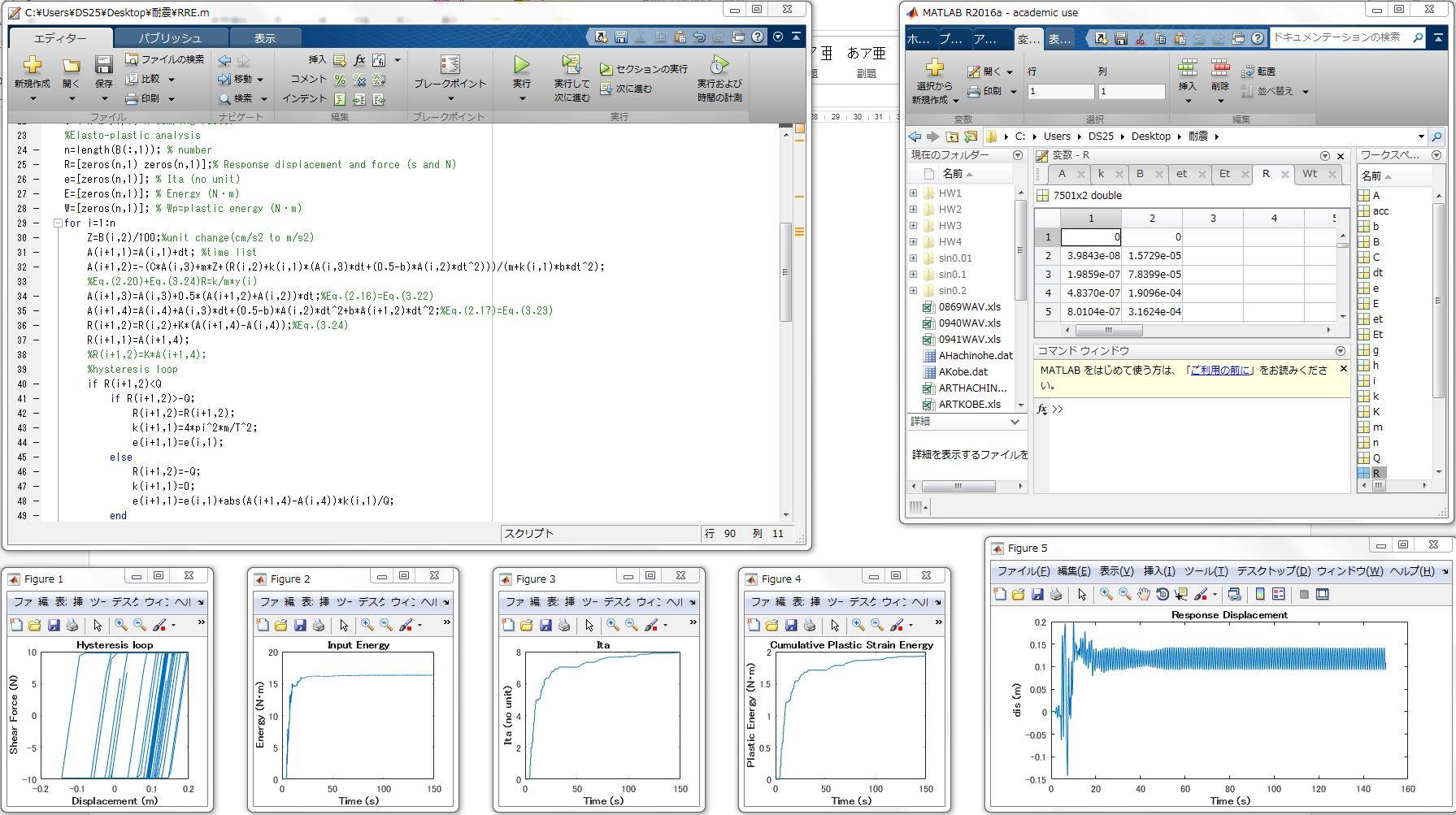
💡 Learning Experience: Don't be afraid to ask for help when you are in trouble. Japanese laboratory culture encourages mutual help, and older students are usually very willing to guide you.
In retrospect, I am really grateful to that senior for his help. It also made me realize thatCross-Research Laboratory Communication and Collaboration It is a very important part of a research career.
Seminars (ゼミ) - Core Activities of the Laboratory
Perhaps in Japanese research laboratories, one often hears Japanese people say:
"I'm sorry, but I have to leave now."
Or say:
"We're screwed. We don't have the data for Zim ready yet..."
I was so dumbfounded that I didn't know what they were talking about, so what exactly is "ゼミ"?
📖 What is ゼミ?
Overwhelming(ゼミナール, Japanese abbreviation of Seminar) refers to the mode of learning in universities and other institutions of higher education in which a small number of students conduct in-depth research or discussion on a specific topic under the guidance of a professor or lecturer. In Japanese, it is also called "research association" or "SeminarThe main features of "ゼミ" are as follows The main features of Zemi are as follows:
| Features | Description |
|---|---|
| small class size | Usually consists of 5-20 students to facilitate in-depth discussion. |
| Topic in-depth exploration | Conduct in-depth research on specific research topics through literature surveys, experiments, etc. |
| Active Learning | Students take the initiative to advance their learning and develop independent thinking through presentations and discussions. |
| Close relationship with professors | Professors can provide detailed guidance to individual students' learning progress and problems. |
To put it simply, ゼミ is a kind of ゼミ similar to Taiwan's ゼミ. Seminars maybe book club The activities of the program are organized in a variety of ways, depending on the professor's area of expertise and research topic. There are many different types of activities, depending on the professor's area of specialization and research topic. Below is a brief comparison of the differences between ゼミ and regular classes:
| Project | General Classes (Teaching) | Overtime (seminar) |
|---|---|---|
| Number of persons | 30-100 persons | 5-20 persons |
| formality | Teaching one-way lectures | Student Report + Discussion |
| Interactive | less | Frequent and in-depth |
| Scoring | Examinations or assignments | Report Performance + Discussion Engagement |
| Time | Fixed (1-2 times per week) | Fixed but flexible |
🏫 Sato Laboratory's ゼミ
There are two types of ゼミ in the Sato Research Laboratory:
Type 1: Book Club Zemi
goal: Fundamentals of Learning and Skills
Mode of Operation::
- Read books on vibration science together, assign specific chapters to presentations, and take turns presenting each week.
- The other is programming and software learning, such as Fortran95,ANSYS,Matlab
My Experience::
Since I need to use Fortran95 to write structural analysis programs, I joined the Fortran95 ゼミ. Every week the instructor teaches new syntax and examples, and we need to finish our work and report back at the next ゼミ.
The following are my notes (handwritten and dense) from when I was desperately trying to learn and understand Fortran95 syntax:
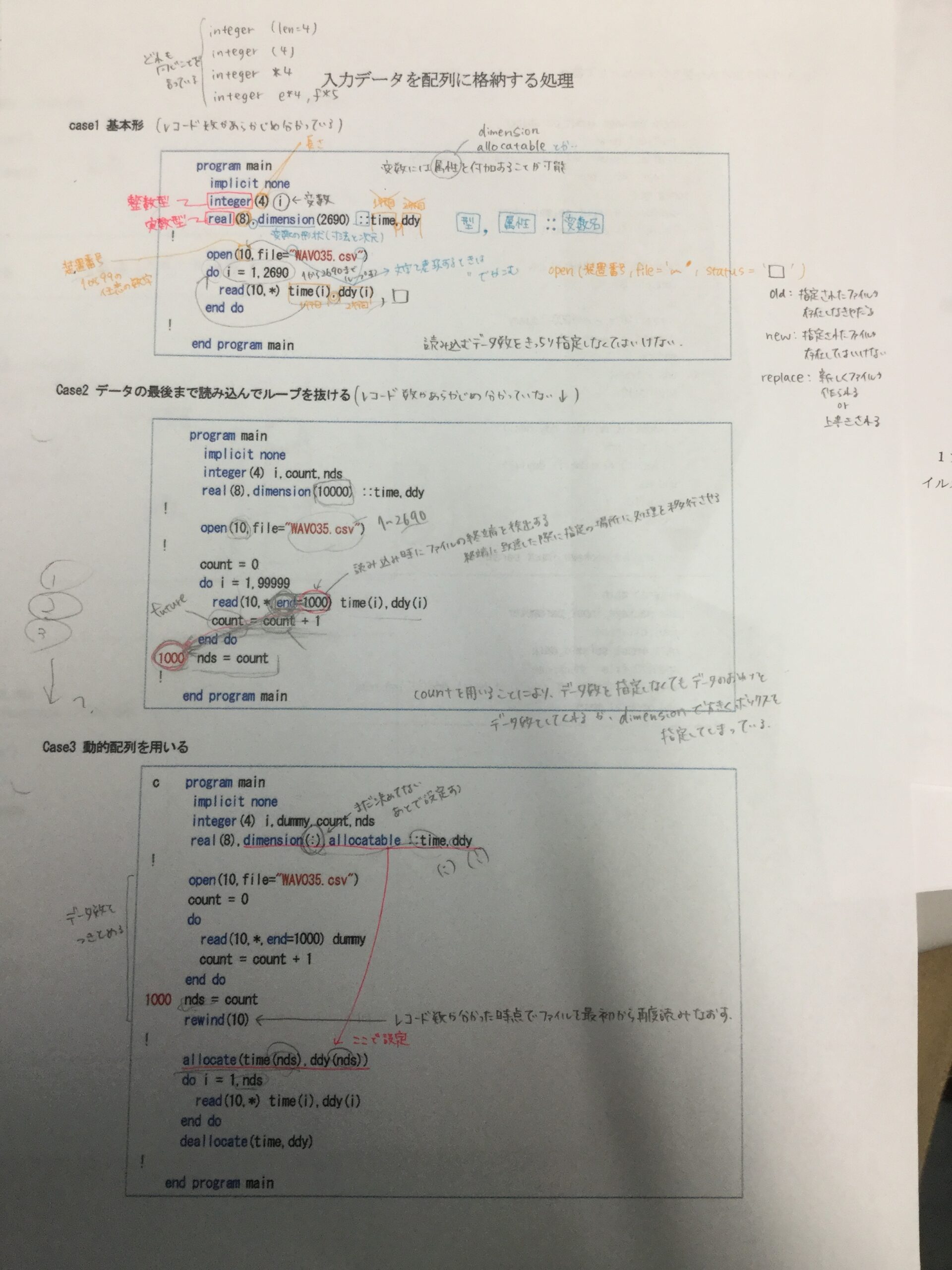
💡 Learning ExperienceI think I'm not smart enough, plus my senior's original code is related to Simulink, so I chose to use it. Matlab to complete my research. This also reminds me:Choosing the right tool for you is more important than following blindly.The
Type 2: Teacher's Discussion ゼミ
goal: tracking research progress and solving research problems
Mode of Operation::
- The professor points out each student's research question and confirms the progress of the research.
- Patiently correcting mistakes and adding new knowledge
- After each discussion, set a time for the next ゼミ.
- Mark the free time slots of teachers on the whiteboard so that students can ask questions whenever they have problems.
My Experience::
Since Mr. Honda and I are co-researchers, he often accompanied me during the discussions to make them go more smoothly. Before every ゼミ, Mr. Honda would accompany me to rehearse and revise my weekly report word by word to make sure that my Japanese expression was correct and professional.
📝 My First ゼミ - The Experience of Being Faced with Reality
One Year Ago: The Professor's Question
I remember the first time I was ゼミ, the professor asked me:
"Do you want to write your paper in English or Japanese?"
At that time, while I was still thinking, Mr. Honda, the senior beside me, said:
"Now that we're in Japan, let's try using Japanese."
I said hesitantly:
"Seriously, I only know the Isuzu and basic grammar, and I haven't even passed the Japanese test yet..."
The schoolmaster added:
"In Japan, if you write an essay in Japanese, we can help you to correct the sentences accurately. On the other hand, if you write in English, we are not native speakers, so we can't say with confidence that the sentences are correct. Now that you are here, you should learn the best parts. I believe in your qualifications, there is no problem!
I was actually very skeptical at the time, but I blurted it out in that atmosphere:
"I've decided to write my thesis in Japanese! I'd appreciate your help!"
First Zemi: Corrected by Professor
I handed in my weekly Japanese newspaper with fear and trepidation and tried to express my research results in Japanese. The teacher said at the end of the class:
"This Japanese is too much like a schoolboy. No."
At that time, I thought to myself:
"Oh, shit. I guess I'm gonna get read to again..."
The teacher suddenly laughed:
"In Japan, because of the fixed sentence pattern, the term 'the world's writings are a big copy' is just a substitution of nouns. Come on, let's fix it."
Japanese Essay Writing Skills Taught to Me by My Professor
I didn't realize that my professor was slowly teaching me how to write Japanese essays:
| skill | methodologies |
|---|---|
| Sentence Vocabulary | Read a lot of essays first, copy good sentences into your own notes, and then learn to revise them into your own sentences. |
| particular typeface | Font and figure sizes need to be corrected, adjusted according to the thesis requirements, and standardized. |
| Background knowledge | Read the relevant books and ask your teacher if you don't know anything. |
On that day, they were so impressed with my lack of understanding. Knowledge of vibration-resistant construction Stop and give me a good lesson. That was the end of the three-hour seminar for three people.
It is very tiring but I have learned a lot. It is hard to squeeze two years into two months, but what I feel is the excitement of growth in a short period of time.
Assistance from Mr. Honda
As for Mr. Honda, every time I talked to a teacher's ゼミ, he would first let me rehearse with him, listening to my report while helping me to revise the weekly report word by word.
💡 Thank you.I could not have completed my Japanese thesis without Mr. Honda's patience and guidance. He is not only my senior, but also my mentor and friend.
💡 How to Prepare a Zero Report?
Based on my experience, the following are practical tips for preparing a ゼミ report:
1. Video production techniques (Japanese version)
| skill | Description |
|---|---|
| Clear title | One key point per slide, with a strong and concise title. |
| Chart Priority | Presenting data in charts and graphs is easier to understand than words. |
| Font Uniformity | Japanese papers usually use "MS Meicho" or "MS ゴシック". |
| Simple color | Avoid too many colors, black, blue and red are recommended. |
| Literature Cited | Cite sources at the bottom of each page |
2. Methods of reading and organizing literature
- Setting up a note-taking system: Organize with Evernote, Notion, or handwritten notes!
- copy a good sentence: When you see a good sentence pattern or a famous term, make a note of it immediately.
- Classification: Categorized by research topic (e.g., "shock-absorbing structures", "shock-absorbing devices")
3. Rehearsal and time control
- At least 3 rehearsalsThe first time I showed it to myself, the second time I showed it to my seniors, and the third time I showed it to my professor.
- Control Time: Usually the overtime report is 10-15 minutes, don't exceed the time limit.
- Videotape yourself: Record on cell phone to check speed of speech, posture, and eye contact.
4. Skills in responding to queries
- I don't understand.Don't pretend to understand, honestly say "すみません, もう一度勉強します"(I'm sorry, I'll study harder).
- Recording problemsRecord the professor's or senior's questions and answer them next time before you go over.
- Prior Preparation: Think about the questions you might be asked and prepare your answers.
Conference Presentation
In addition to research, it is also important to publish the results. Sato Laboratory regularly participates in two conferences per year. The Architectural Association(Architectural Institute of JapanShort Title AIJ):
- National Architectural Association: Students from all over Japan will travel from all over the country to attend the designated venue.
- Kanto Branch Architectural Society: mainly for students in the Kanto region
🌏 What is Society Publishing?
Published by the Society(Presentation) is the process of presenting one's research at an academic symposium and receiving questions and discussions from other scholars. It is a very important part of your research career because...:
- ✅ Presentation of research results: Let other scholars know about your research
- ✅ Undergoing Academic Examination: Identifying Research Blind Spots through Q&A
- ✅ Expansion of the human network: Meet professors and students from other schools
- ✅ Add value to your resume: The student's publication record can be written in CV.
🇯🇵 National Architectural Institute (AIJ) - Kyushu Fukuoka
Basic Information
- Time: August 2016
- Location: Kyushu University (Fukuoka)
- participant: I spoke with Mr. David
- Report Language: English
- Report Topics: Theory and application of seismicity
division of labor and cooperation
- Mr. David: Theoretical Framework of the report.
- mePractical Application
Research Grants
The Laboratory provides us with Full grant, included:
| Project | Amount |
|---|---|
| Round trip ticket (Tokyo ⇔ Fukuoka) | Approx. 25,000 yen |
| Hotel fees (3 nights) | Approx. 30,000 yen |
| Daily meal subsidy | About 10,000 yen |
| Total | Approx. 65,000 yen |
💡 Notes on Reimbursement: You will need to keep your round-trip ticket stubs, club participation tickets, and proof of lodging (on a school-specific form for the hotel to fill out) in order to receive reimbursement.
Day of publication
Even though it was hot, everyone was still dressed in suits Official entrance. After the presentation, you will change back into your casual clothes and join the celebration banquet.
What I've learned::
- I was very nervous about presenting in English for the first time at the Japan Society.
- But with Mr. David, it's a lot less stressful.
- A professor asked a question in Japanese during the Q&A session, but fortunately Prof. Sato helped to translate it.


🗼 Kanto Branch Architectural Institute (AIJ) - From Zero to Japanese Thesis
One year later: On the stage of the Kanto branch meeting
The March 2017 publication is actually my exchange year's study of culminate in a masterpieceThe whole thing is played out here.
A year from now, I'll be standing Japan Construction Association Kanto Branch Meeting On, publish your own Japanese ThesisI was able to present a 12-minute paper in Japanese, and honestly, I learned a lot from the hard work of practicing.
Post the day's challenge
After the announcement, a few teachers asked some questions, but in fact, my Japanese was not good enough at that time:
- I don't understand some of the Japanese.
- Some of the answers I got were incomplete.
- I can only say "今後も引き続き検討します" (I will continue to explore in the future) and end my session.
Acknowledgement from your senior sister
Even so, after the presentation, teachers and older siblings came up to me to talk about it:
"Your presentation was really great! (Prezente, this time on Suzurashii desu!)
I'm not going to get a hundred percent, but that's what keeps me motivated.Decided to continue graduate school in JapanThe
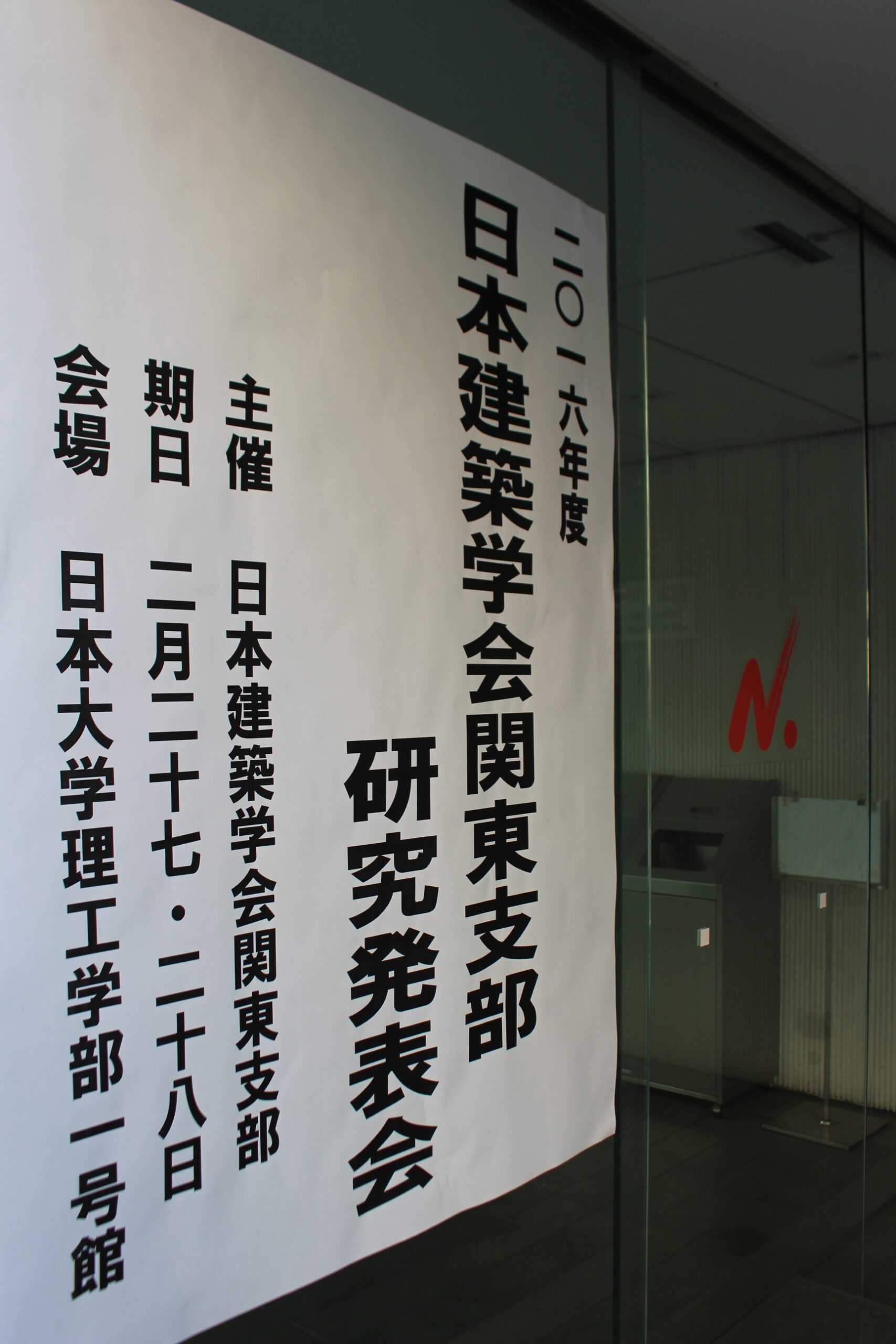
📋 Preparedness Checklist for Club Presentation
Based on my experience, here's a complete checklist for preparing for a club presentation:
1. thesis writing schedule (for example, published in March)
| Time | assignments |
|---|---|
| December | Identify a research topic and begin a literature review |
| January | Complete research methodology and begin experimentation/simulation |
| Early February | Complete the first draft of the paper and submit it to the supervising professor for correction. |
| Mid-February | Revised according to the professor's comments and completed the final version |
| End of February | Contributing Institute (online submission) |
| Early March | Make a presentation slide and start the rehearsal. |
| Mid-March | Day of publication |
2. Highlights of the slide show
- Pages: 12-minute report of about 15-20 pages
- font: Use "MS Ming Dynasty" or "MS ゴシック" in Japanese papers.
- Chart: Data is presented in graphs and charts, which are clearer than words.
- quote: cite sources at the bottom of each page
3. Q&A preparation skills
- Anticipation: List 5-10 questions you may be asked.
- Prepare Answer: Write a short answer (Japanese and English)
- I don't understand.If you really don't know what you're talking about, just say "すみません、今後も引き続き検討します".
4. Dress and Etiquette
- Clothing: Formal suits (black or dark blue for men and suits for women)
- bow: Bow 30-45 degrees at the beginning and end of the report.
- eye contact: Don't just look at the slide, look at the audience!
- Time ControlThe Japanese value punctuality very much, as it is strictly limited to 12 minutes.
🎓 The Value of Learning
Participating in the Society is not only a platform for presenting research results, but also an important opportunity to communicate with other schools and expand my network. Through these activities, I have learned:
- ✅ How to make a professional presentation in English and Japanese
- ✅ How to Handle Academic Challenges and Criticisms
- ✅ How to Stay Calm Under Stress
- ✅ How to network with other scholars
With the increase in the number of times, I have been able to confidently present myself on different international stages.
V. Growing from Zero to One
📈 Breakthroughs in Language Barriers
Initial frustration and self-doubt
- First time overtime"I was told I looked too much like an elementary school student in Japanese."
- First time reading an essayIt takes 2 hours to read a page, and I still can't understand it.
- First time writing a weekly newspaper."The red color of the river has been changed by my senior.
Help from seniors
- Mr. Honda.: Revise my Japanese weekly newspaper word for word
- Kida"It's okay, take your time," he said.
- Prof. SatoI was patiently taught how to read papers and write essays.
The Key to Continuous Improvement
- Read at least 1 paper a day: Accumulation of professional terminology
- Write at least 1 weekly newspaper: Practicing Japanese Writing
- At least 1 report per month: Overcoming Tension
Results
- 3 months later: Passed N2 test
- 6 months later: I can write the weekly newspaper in Japanese (though it needs to be revised).
- 12 months later: Can publish papers in Japanese
🎯 Academic competence enhancement
Changes in the speed of reading thesis
- beginning period: 1 page 2 hours
- 3 months later: 1 page 30 minutes
- 6 months later: 1 page, 10 minutes
- 12 months later: 1 paper (10 pages) about 1-2 hours
Growing Writing Skills
- beginning period: It takes 3 hours to write a 1-page weekly report, Man Jiang Hong.
- 3 months later: It takes 1.5 hours to write a 1-page weekly report, with fewer revisions.
- 6 months later: 1 hour to write a 1-page weekly report, with little or no revisions
- 12 months later: Completion of a 30-page Japanese thesis
Cultivation of critical thinking
Through the ゼミ and will publish, I will learn:
- Questioning Assumptions: Do not blindly trust the literature, but test the evidence.
- Logical Reasoning: research conclusions must be supported by sufficient evidence
- Acceptance of criticismCriticism as an Opportunity to Improve
Conclusion
This year's academic training has helped me grow from a student who "only knows the Isuzumi alphabet" to a researcher who is able to write papers in Japanese and publish them in academic journals. The process was full of challenges and frustrations, but also full of achievements and emotions.
If you are going to Japan to study for a master's degree or participate in an exchange program, I hope this article will help you understand more about Japanese academic culture and learning styles. Remember:Language barriers can be overcome, and academic skills can be cultivated. The key is to remain humble, take the initiative to learn, and have the courage to take on challenges.The
In the next post, I will share my leisure life in Tohoku University: the world-class roller coaster challenge at Fuji-Q Highland, the romantic fireworks at the Tamagawa River Fireworks Festival, and a small driving trip to Fukuoka. Please look forward to it!
Frequently Asked Questions (FAQ) for Readers
- QHow difficult are the programs at EKU?
- A
Tohoku University is one of the top universities in Japan and its programs are very difficult. Higher. But just:
- Attend classes and take notes
- If you don't know, ask a senior or a professor.
- Utilizing Library Resources
- Participate in Zemi and Book Club
The student will be able to complete his/her studies successfully. Exchange students usually have lower credit requirements (10-20 credits) and are less stressed than regular students.
- QCan I take a class if I don't know Japanese?
- A
It's okay! Yes, at Dongdaemun University. English Courses(The ACAP Program covers the fields of engineering, science, and information technology. However, if you want to gain a deeper understanding of Japanese culture, it is recommended that you take at least 1-2 Japanese language courses and attend a professional program that teaches in Japanese.
- QDoes the report have to be in Japanese?
- A
Depends on the laboratory. Some laboratories (especially those that are highly internationalized) accept English reports, but most laboratories still use English as the language of choice. Mainly Japanese. Recommendation:
- Prepare the content in English first
- Please translate it into Japanese for me.
- Practicing Japanese Pronunciation and Intonation
- QDo I have to pay for the welcome party?
- A
Depending on the circumstances:
- Organizer of the Research Laboratory: Usually the professor pays most of the cost, and the student may only have to share a small portion (about 1,000-2,000 yen).
- Student-run organizations: Usual average cost-sharing (about 3,000-5,000 yen)
- Newcomer OfferSome laboratories allow newcomers to pay less or nothing.
Recommendation: Prepare 5,000 yen in cash for contingency.
- QDo I need to submit a paper for publication?
- A
Yes! Learning to publish is usually required:
- Abstracts of Contributed Papers(Abstract, approximately 200-500 words)
- After review and approval, submit a full paper(Full Paper, approximately 4-10 pages)
- Make a presentation slide show(Presentation Slides)
- Live Report(10-15 minutes)
The deadline for submissions is usually before the publication date 2-3 monthsIf you are a member of the public, it is important that you are prepared in advance!
- QWhat to do if your paper is rejected?
- A
Normally, Society articles will not be rejected, but for international journals, it is normal for papers to be rejected, even by experienced scholars. Suggestion:
- Read the review comments carefully: Identify the problem
- Discussions with supervising professors: Seeking Directions for Improvement
- Revise and resubmitDon't give up.
- Contribute to Other InstitutesTry a different platform.
Remember:Being rejected doesn't mean that the research is bad, but that it needs to be improved. Keep the faith and keep trying!
Related Resources
- Nihongo Talking Room ILA Japanese Language Center
- Student Support Center - Institute of Science Tokyo
- 2016 General Meeting of the Architectural Society of Japan [Kyushu]
- (Kanto Branch Information) FY2017 (88th)
Read Next
Let's go, let's read the next one!
Want a little refresher on the last one?
Or go back to the EP1 catalog for a different story?

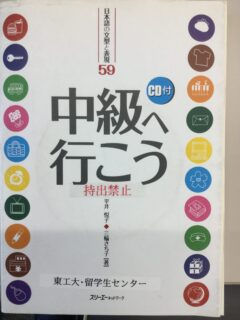
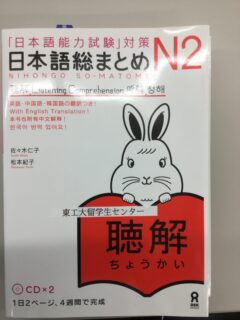
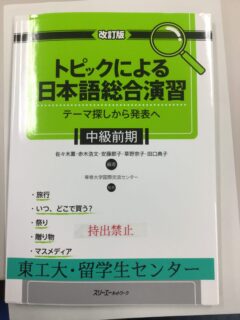



Message Center Feedback